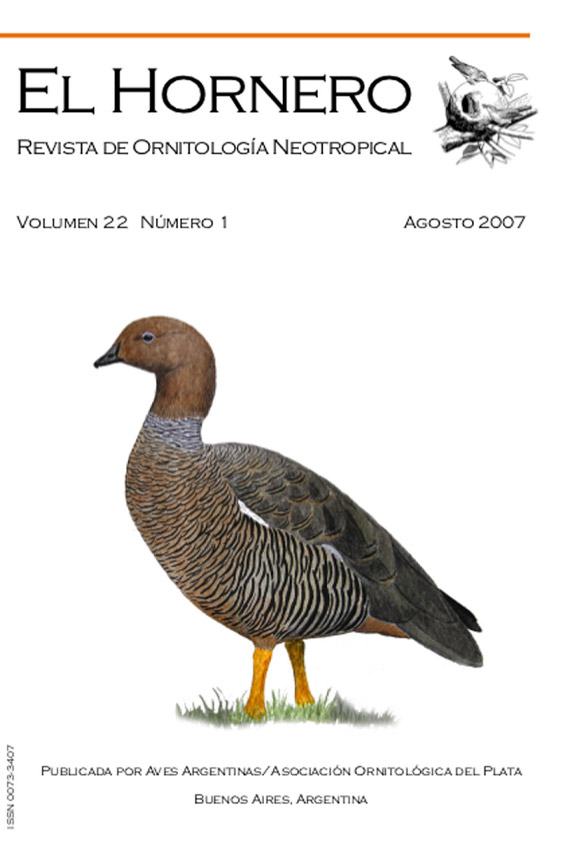Abstract
We describe a new Kelp Gull (Larus dominicanus) colony, the most northern one along the Argentine Atlantic coast, located near Punta Rasa Reserve, Samborombón Bay. The colony was found on one of several island of the San Clemente’s tidal creek located near San Clemente del Tuyú Harbour. The first visit to the colony was made during courtship and nest formation in 3 September 2005. The second visit was made during the egg laying period between 24–26 September 2005. A total of 54 nests were found, 50 of them upon pickle weed, 2 upon dense-flowered pampas grass and 2 in the mud near a burrowing crab area. On 15 December 2005 we counted a total of 64 chicks in 54 nests. Although this is the first record of Kelp Gull reproduction in the area, local fishermen recall this colony being there since at least 20 years ago. Its location near San Clemente harbour suggests that human presence may be frequent and that egg collection could occur frequently.
References
BERTELLOTTI M Y YORIO P (2000) Age related feedingbehaviour and foraging efficiency in kelp Gull (Larusdominicanus) attending coastal trawlers in Argentina.Ardea 88:207–214
BIBBY CJ, BURGESS ND Y HILL DA (1992) Bird censustechniques. British Trust for Ornithology. AcademicPress, Londres
BÓ NA, DARRIEU CA Y CAMPERI A (1995) Aves.Charadriiformes: Laridae y Rynchopidae. Pp. 1–47en: Fauna de agua dulce de la República Argentina. Vo-lumen 43. Fascículo 4c. PROFADU, La Plata
BURGER J Y GOCHFELD M (1996) Family Laridae (gulls).Pp 572–623 en: DEL HOYO J, ELLIOTT A Y SARGATAL J(eds) Handbook of the birds of the world. Volume 3.Hoatzin to auks. Lynx edicions, Barcelona
GARCÍA BORBOROGLU P Y YORIO P (2004) Habitat re-quirements and selection by Kelp Gull in central andnorthern Patagonia, Argentina. Auk 121:243–252

This work is licensed under a Creative Commons Attribution-NonCommercial 4.0 International License.





